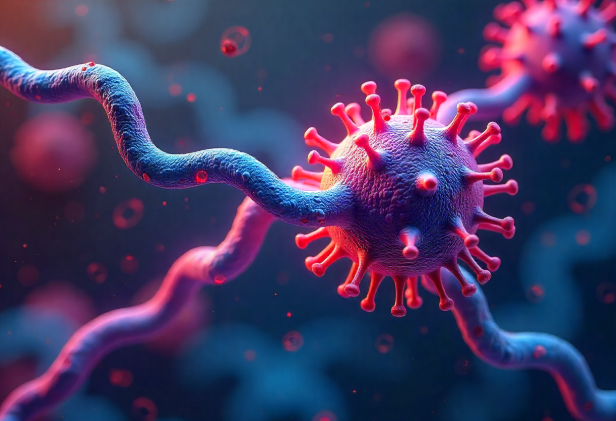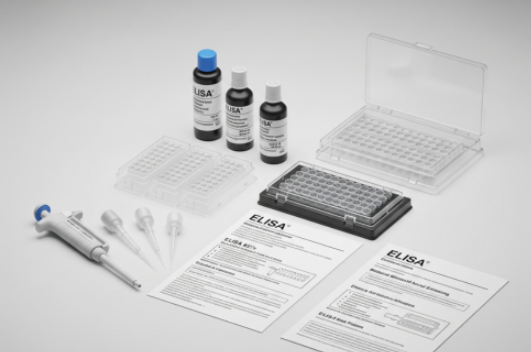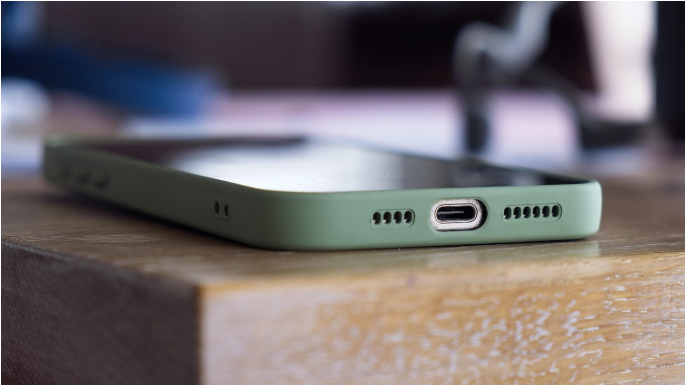Can Engineered Enzymes Clear Toxic Protein Build-Up In The Brain?

Strong 8k brings an ultra-HD IPTV experience to your living room and your pocket.
Batten disease, or Neuronal Ceroid Lipofuscinosis (NCL), is a rare but devastating childhood brain disorder. Children affected by this condition suffer from -
- seizures,
- vision loss,
- motor dysfunction, and
- eventually early death.
One form of Batten disease, called CLN10, is caused by a lack of a critical enzyme, cathepsin D (CTSD). It is responsible for breaking down and recycling proteins in the brain's lysosomes, the cell’s “waste disposal” system.
When CTSD is missing, toxic protein clumps build up in the brain’s cells. Previous studies have shown that giving mice a lab-made version of cathepsin D helped clear these harmful aggregates and improved symptoms.
However, here is the question from researchers: could other related enzymes—such as Recombinant Rat Cathepsin B (Ctsb)—also help?
The Role of Cathepsins in Brain Health
The cathepsin family of enzymes plays a major role in breaking down proteins inside lysosomes. There are three types:
- Aspartyl proteases like Cathepsin D (CTSD)
- Cysteine proteases like Cathepsin B (CTSB) and Cathepsin L (CTSL)
- Serine proteases
While CTSD is clearly essential—its absence causes CLN10. Mice that lack CTSB or CTSL alone don’t show major brain problems.
However, mice missing both CTSB and CTSL do develop brain atrophy and protein build-up, similar to CLN10. It suggests these enzymes might work together or "back up" each other, highlighting the importance of studying such proteases using tools like MyBioSource antibodies and assays.
That idea sparked the current study: Can giving lab-made CTSB and CTSL help clear toxic proteins in CLN10, like CTSD does?
Engineering and Testing the Enzymes
To explore this, researchers produced recombinant (lab-made) versions of CTSB and CTSL, and tested how well these enzymes could:
- Enter cells and reach lysosomes
- Break down the toxic protein build-up in cells from CLN10 mice
- Work in brain tissue slices and live mouse models
The enzymes were taken up successfully by cells and delivered to lysosomes. In astrocytes (a type of brain cell) from CLN10 mice, CTSL was able to partially reduce levels of a toxic protein called saposin C (SapC).
CTSB, however, didn’t seem to help much.
When tested in brain tissue slices, both CTSB and CTSL showed some ability to break down SapC and another protein, SCMAS, though CTSL again appeared slightly more effective.
Do These Enzymes Work in Living Mice?
To see if the treatment worked in living animals, researchers gave intracranial injections of CTSB and CTSL to CLN10 mice (since the enzymes can’t cross the blood-brain barrier when injected into the body).
Results showed:
- The enzymes did reach the brain and were taken up by brain cells
- Only CTSL led to a modest reduction in toxic proteins and brain inflammation
- Neither enzyme improved the mice’s weight or lifespan
Why Didn’t It Work Better?
Despite reaching the brain and having some effect, CTSB and CTSL were much less effective than CTSD.
Tests showed that -
- CTSB had weaker protein-cleaving power,
- and CTSL—while more active—still wasn’t enough on its own.
Interestingly, combining all three enzymes (CTSD, CTSB, and CTSL) in lab tests showed the strongest protein breakdown. It is suggested that lysosomal function depends on a team of enzymes working together, not just one.
What Does This Mean for the Future?
The study reinforces that treating neurodegenerative diseases like Batten requires more than just delivering a single enzyme.
The lysosomal system is complex, and enzymes may work best in a hierarchical or cooperative way.
For CLN10 and similar disorders, a combination therapy using multiple types of cathepsins could offer a better solution.
It also highlights the potential of enzyme replacement therapies—if we can fine-tune delivery and boost their combined effects.
While CTSB and CTSL alone may not be enough, they’re still part of the puzzle in understanding and potentially treating lysosomal storage diseases.
Finally…
Neurodegenerative diseases often involve the buildup of toxic proteins. The study adds to growing evidence that enhancing the brain's natural waste-disposal system, the lysosomes, may hold promise.
Researchers continue to refine enzyme-based therapies, aiming for solutions that might one day slow or stop diseases like -
- Batten,
- Alzheimer’s, and
- Parkinson’s at the cellular level.
Note: IndiBlogHub features both user-submitted and editorial content. We do not verify third-party contributions. Read our Disclaimer and Privacy Policyfor details.







